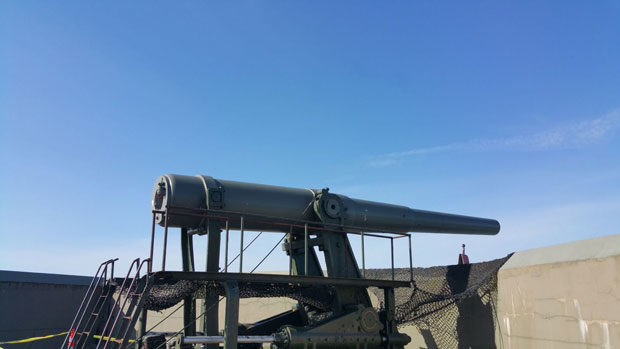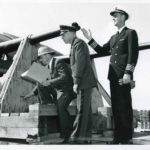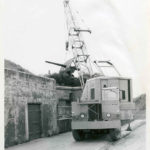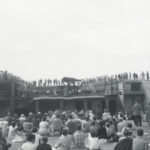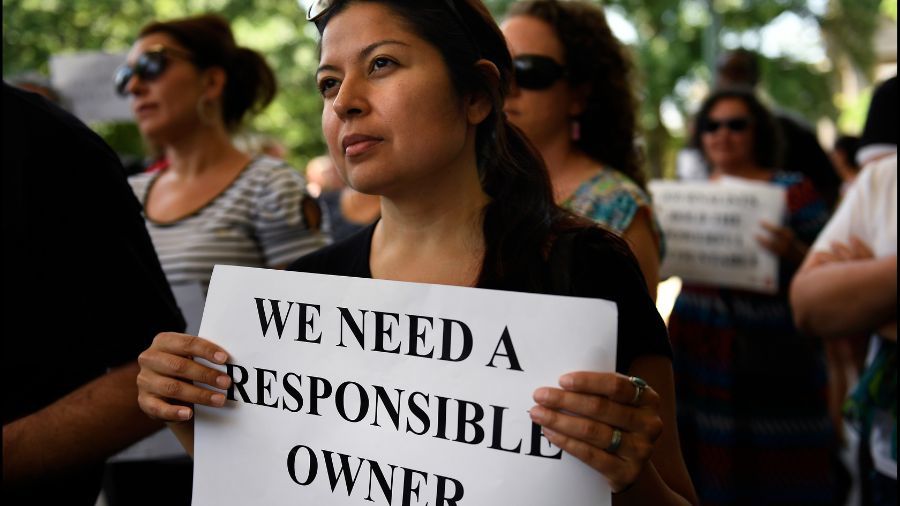The twisted tale of Whidbey Island’s big guns
Apr 25, 2018, 6:06 AM | Updated: 8:49 am
A pair of enormous 125-ton guns at Fort Casey State Park on Whidbey Island are a reminder of long-ago fears of naval invasion of Puget Sound.
And they’re also a great place for kids (of all ages) to play.
The giant guns are mounted atop huge concrete “batteries” that were built beginning in the 1890s. The concrete is original, and parts of it are still remarkably intact.
But the guns are not original. They’re replacements.
And they wouldn’t be there were it not for a handful of local leaders who in the 1950s launched what became a long and convoluted effort to interpret the history of Fort Casey by bringing back some big guns.
RELATED: Crash and UFO mystery reveal hidden history
This year, those replacement big guns are celebrating their 50th anniversary at the popular park. It’s worth looking back at how close these iconic artifacts came to not making it here at all.
A look back
Fort Casey was built beginning around 1897 as part of a system of coastal defense that also included Fort Worden and Fort Flagler; the often-overlooked Fort Ward on Bainbridge Island; and places like Fort Stevens on the Oregon coast.
The guns are huge. The barrels alone weigh 33 tons, and they were able to fire 10” diameter shells thousands of yards to disable enemy ships with evil designs on Puget Sound.
But the enemy never came by ship. And warfare changed so dramatically in the early 20th century – with aircraft and faster ships – that the guns at Fort Casey and other installations were mostly obsolete by the 1920s, if not earlier. During World War I, many of the smaller big guns around Puget Sound were shipped off to Europe and refashioned as battlefield weapons.
Matthew Bell works for Washington State Parks. He’s a member of a scholarly historical organization called the Coast Defense Study Group, and he admits that he’s been fixated on the guns at Fort Casey for as long as he can remember.
“I grew up here in the Pacific Northwest and I used to camp a lot at Fort Casey, Fort Worden, Flagler and for some reason, they latched onto me and I became obsessed with them,” Bell said.
Bell says that while many smaller guns from Puget Sound forts were shipped overseas for the First World War, the biggest ones, including the 10” guns at Fort Casey, were so heavy, they were left in place. But then World War II came along, and with it, a need for scrap metal.
“And they looked at those guns. They were obsolete. They weren’t really helpful, the war’s in Europe it’s not here in America, so they scrapped them,” Bell said. “And then after the war, they scrapped the last of them so there were no guns left at any of the forts here.”
Repurposing Fort Casey
During the 1930s and 1940s, Fort Casey and other Puget Sound forts had been repurposed for other military needs besides coastal defense. Then, Fort Casey was surplused in the early 1950s.
Matthew Bell says that it was in the mid 1950s when Washington State Parks took possession of a large portion of Fort Casey and began converting it to recreational use.
Bell says that there was a Washington State Parks historian named Albert H. Culverwell who wanted to properly interpret the gun batteries there — that is, show and tell the story of what had been there and why, and help park visitors understand why the history was significant.
Bell says that’s hard to do when you don’t have any guns. Fortunately, Culverwell had help from US Navy Lieutenant David Kirchner, and the two were able to track down a pair of substitute 10” guns.
The only trouble was, they weighed 125-tons a piece. And there was the fact that the guns were at an American installation called Fort Wint, far away on a remote island in Subic Bay in the Philippines.
To say that there are a lot of twists and turns to this story is something of an understatement.
Culverwell of Washington State Parks reached out to the Navy about moving the guns from the Philippines to Fort Casey. Rear Admiral Arthur F. Spring was sympathetic, and told Culverwell he could have the guns for what it would cost for the US Navy to disassemble them, which Spring figured would be about $3,000. Spring even said that the Navy would ship them to Puget Sound for free.
But then Admiral Spring died in plane crash. His replacement did a more thorough estimate of the work that would be required, and the revised bill came to something more like $30,000.
Bell says that State Parks officials tried to raise the money, and they struggled. The years began to slide by. Then, the U.S. Navy set a deadline to have the money in hand by the end of 1967, or the guns would go to somebody else.
Meanwhile, Bell says, another suitor came around and tried to snatch the guns away from Washington State Parks.
“The Smithsonian came out and essentially told the Navy, ‘If Washington State Parks is never going to take those guns, we’ll take them,’” Bell said. “’We’d be more than happy to have two coast artillery guns in Washington DC that we could use to interpret this period. So, FYI, if they don’t take ’em, we’ll take ’em.’”
The pressure is on
Even Washington State Governor Dan Evans got involved, and declared November 1965 “Guns For Casey” Month. But it was the Coupeville Lions Club that ultimately came through and helped gather donations, and who probably helped convince the State Legislature to come up with with $20,000 in 1967.
With the money finally in place, work could begin on readying the guns at Fort Wint for disassembly and shipping. The first step, says Matthew Bell, was soaking them in penetrating oil.
Then, in the spring of 1967, a US Navy maintenance team got to work doing what maintenance teams do best.
They had no manuals or other instructions, but Bell says that in a newspaper account at the time, one member of the crew expressed total confidence in his ability to get the job done, “’I’m a maintenance man – I can take anything apart.’”
“They disassembled everything, drug them off the hillside on that island using a mixture of cranes, a bunch trailers pulled by mules and brought them down to the little dock,” Bell said.
But now there was one more problem. The Navy wanted to charge Washington State Parks for shipping the guns to Whidbey. Fortunately, Sea-Land Corporation stepped forward and offered to lash the guns to top deck of one of their large container ships.
Problem solved? Not so fast, says Bell.
“In late May of 1968, the SAN FRANCISCO, a Sea-Land container ship, left Subic Bay and went on its way to Seattle” with the guns aboard, said Bell.
“And on its way, because the darn guns story couldn’t get more random and convoluted, the ship was caught in a freak storm,” Bell said. “They suffered three 40-degree rolls in one minute, and [one of] the gun barrels broke loose and slid across the deck.”
Fortunately, Bell said, “a reinforcing rib on the gun got caught on the [deck] railing, and that’s the only thing that stopped the gun from going in the drink.”
“They lashed it down with chains and anything else they could find and [the SAN FRANCISCO] steamed into Seattle with a gun barrel hanging off the side of the ship,” Bell said.
RELATED: Without Captain Cook, we might all be speaking Spanish
After all that drama, the rest of the story is pretty anti-climactic. By July 1968, the old guns were reinstalled, and they had a big dedication ceremony at Fort Casey State Park on August 11, 1968.
Bell is looking forward to celebrating the 50th anniversary this summer, but he admits he’s a bit of a stickler when it comes to the guns at Fort Casey. He says the guns from Fort Wint don’t quite match with the carriage they rest on, and that “it looks a little funky if you know what to look for.”
“But nonetheless, they did the dedication on August 11, 1968,” Bell said, “and it’s coming up on 50 years of kids crawling all over them.”

